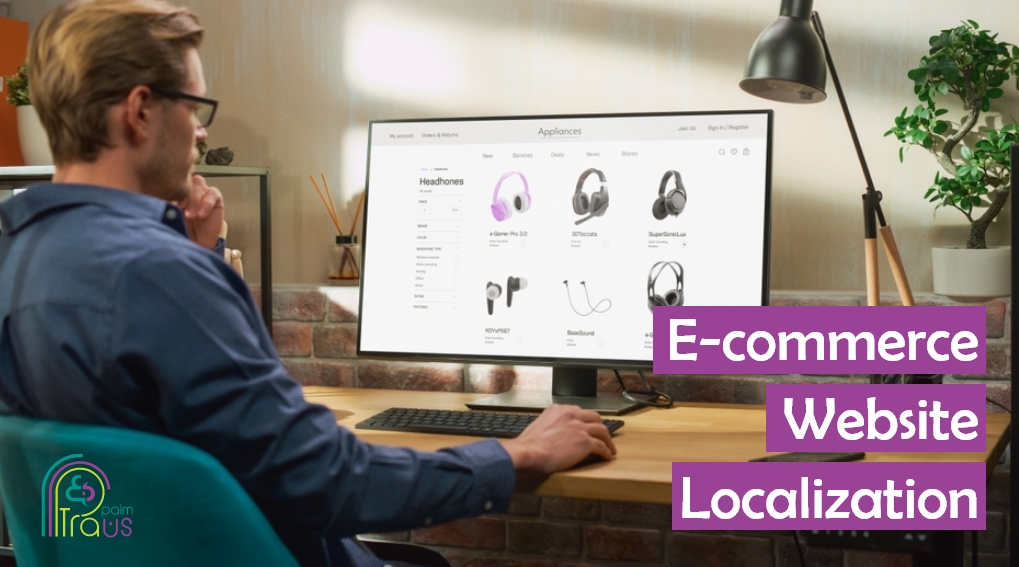Deciding to expand your e-commerce business is worth it. The retail industry has been booming, and people worldwide are steadily shifting toward online shopping.
However, with two-thirds of the world’s population connected to the internet and online shoppers reaching 2.64 billion, how can you hold a competitive advantage?
The key is streamlining your customer’s buying journey, no matter where they are or what language they speak – and this starts with e-commerce website localization.
In this post, we will go over what localization is, why it is important for e-commerce, and how multilingual websites can affect your business’s growth in international markets.
Ready to go?
What Is E-commerce Website Localization?
Website localization refers to adapting your website’s content, design, and functionality to culturally resonate with the needs and preferences of your target customers. In other words, you are personalizing the entire user experience to give target market visitors the impression that the website was specially designed for them.
Now, if you effectively translate and localize your website, your customers will not have to deal with the confusion of automated translation or struggle with an unfriendly interface – things that can compromise their experience.
So, what goes into website localization?
Language and Content
Tailoring the website’s language and content, including product descriptions and FAQs, to your target market’s native language
Cultural Adaptation
Adapting visuals, graphics, and design elements to align with the cultural preferences of the target audience
User Optimization
Optimizing the website’s functionality for the local market, including displaying prices in the local currency and aligning payment methods with local preferences.
User Experience (UX) Enhancement
Enhancing the overall user experience, including navigation, responsiveness, and page load speed.
In conclusion, website localization helps you improve your company’s standing in the e-commerce market, raise brand awareness, boost sales, and win over customers through a tailored shopping experience.
If this is what you are looking for, explore next how to ensure successful website localization.
Content Localization: Speak Your Audience Language
You risk losing a potential customer if your communication is poor. Physiologically, people tend to favor and engage with familiar things; the same goes for engaging with content in their language and buying from platforms that communicate in their native tongue.
The Can’t Read, Won’t Buy initiative of CSA Research stated that 65% of e-commerce users prefer to buy in their language, and 40% of shoppers don’t purchase in other languages.
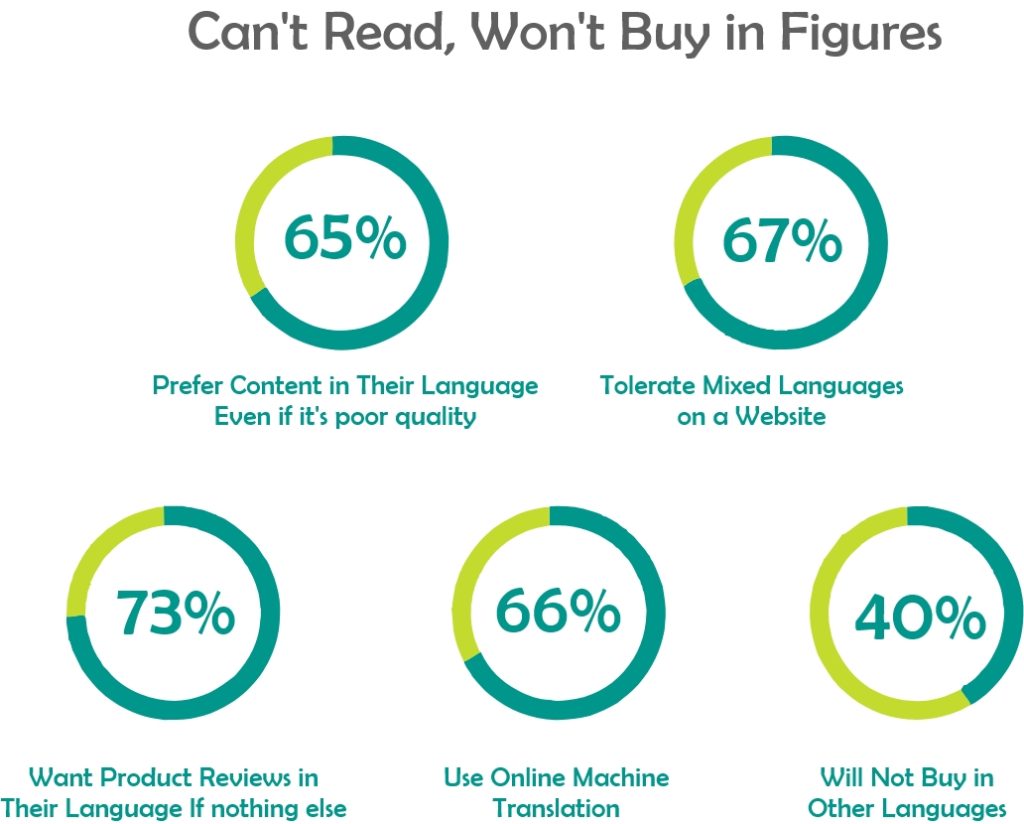
Primarily, website content localization goes beyond text-to-text conversion. You develop content that makes your audience feel like you created the e-commerce website specifically for them. Not only is it written in their language, but it also accommodates their local cultural preferences and backgrounds.
Locale-specific content can include customized text for local holidays, exceptional sales at local events, or adjusting the product description to highlight your new customers’ pain points.
Black Friday Or White Friday?
Although its origins are in the US, Black Friday has been popular in maِny countries worldwide. And it becomes interesting how e-commerce websiِtes localize Black Friday offers to meet cultural differences.
You can see that these distinctions have involved more than naming. They touched on timing, duration, and even the products applied to the promotions. More importantly, they entail the approaches employed to reach the target customers through content, design, pricing strategies, and marketing methods.
For instance, in Egypt and several Arab nations, Friday has a religious connotation, and black symbolizes death or bad luck in their culture. So, Black Friday was culturally irrelevant when used in the region. The Arab world’s shoppers changed the wording to White Friday.
Local consumers’ interests and purchasing habits are among the other differences as well. For example, in Egypt, White Friday promotions last for the whole month, offering discounts for all product categories.
However, in some international markets, it might last for days or weeks or even extend into early December.
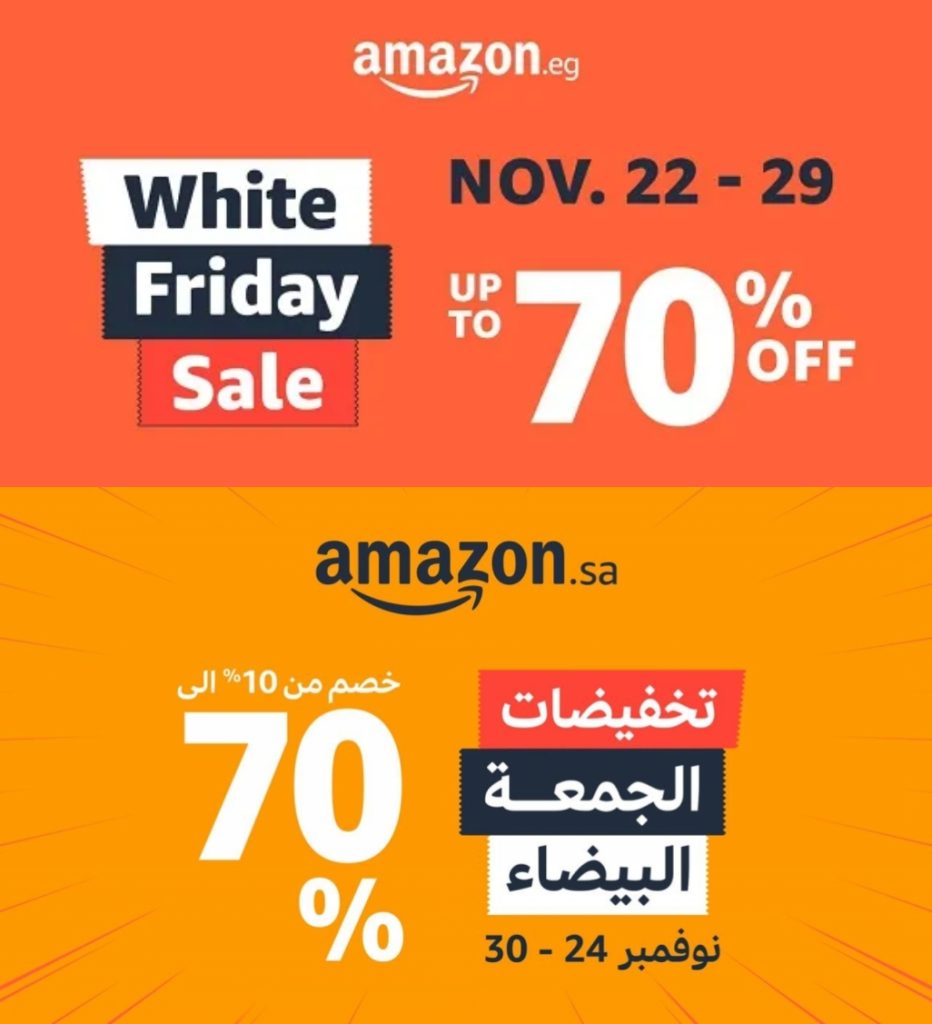
E-commerce Website Localization: A Matter Of Context
Content localization should not be based on machine translation. Human translators are the ones who comprehend the context and steer a human-to-human relationship.
For instance, in a product description, the content should follow your target consumers’ cultural preferences while addressing their needs and resolving their pain points. It’s something only local expert teams can touch upon.
Throughout the content localization process, you don’t only translate product descriptions; you localize all your e-commerce website text, including reviews, customer support, and even numerical values.
Let’s look closely.
Local Customer Support
Providing customer support in the local language is crucial to building a positive shopping experience and driving customer satisfaction.
Well, a CSA survey found that 75% of customers are more likely to purchase from a company again if post-sale support is provided in their native tongue.
That’s a huge percentage to consider!
In general, customers might inquire about product features, shipping procedures, item return policies, or any other issues related to their e-commerce journey on your platform.
If you want to build trust and guarantee your customer’s re-purchase action, you must ensure not only linguistically accurate communication but also an understanding of local cultures and preferences.
For instance, in some regions, you might consider sharing a hotline or local mobile number for inquiries next to the email. Others might prefer live chat for faster responses.
Eventually, your in-depth analysis of your demographic will allow you to personalize every aspect of your customer service strategy.
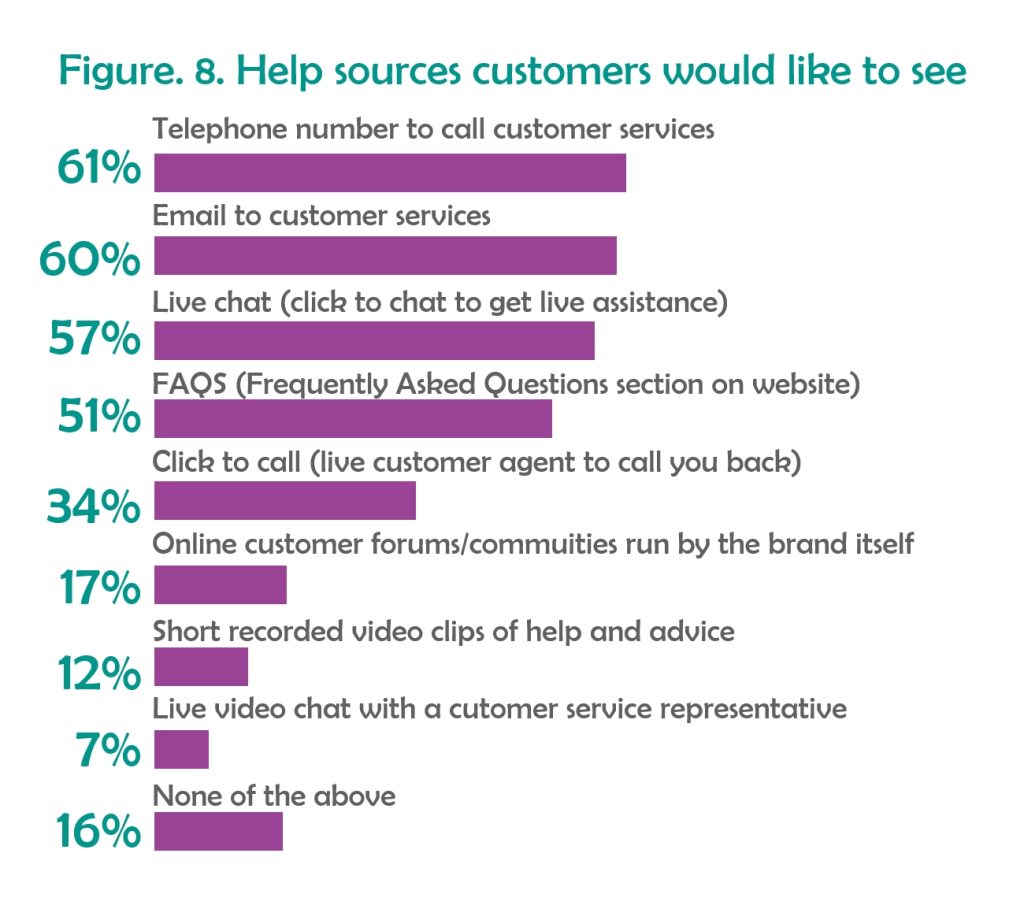
Customer Reviews
A vast majority of consumers base their purchases on the insights and experiences of others. Did you know that 73% of online shoppers prefer to read reviews written in their own language before making a purchase?
And more, 66% of internet users use online machine translation (MT) to gain access to content in their native language.
Nonetheless, MT may not be reliable enough to convey the intended meaning, especially when it comes to customer reviews. There is always the chance that a word or symbol that is perfectly fine in one language is perceived as offensive in another.
So, to ensure your customers have a personalized experience on your website, you might need the assistance of a manual review to make sure the information they read is accurate and to prevent possible mistranslations.
Numerical Formats
Cultural differences between countries are evident in numerous aspects, including the date and time formats and the measurement units. For instance, in America, people use inches and pounds to describe dimensions and weight, while in Europe, they use the metric system, such as centimeters and kilograms.
Another illustration is the date format, which varies dramatically between countries. Americans use the date format MM/DD/YYYY, while Japan uses YYYY/MM/DD. Likewise, time formats vary and need your attention. Some countries use a 24-hour clock, and others use a 12-hour clock.
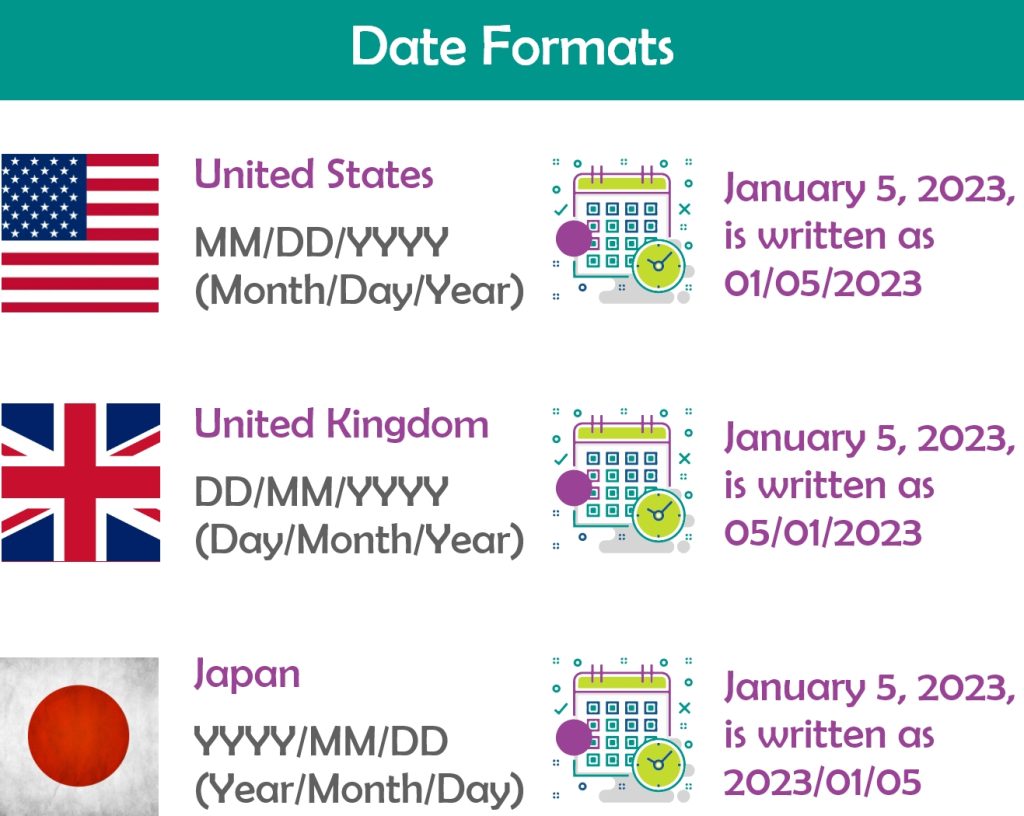
Having a careful eye toward such details embraces your customers’ journey and takes you one step ahead to a seamless user experience.
Let us count another crucial aspect: the numerical separators, like decimal separators and thousand separators.
In Germany, unlike the US, the decimal separator is (,) while the thousand is (.). For elaboration, let’s see how 10,000 will be read in the US and Germany.

Only one inaccurate localized character can cause a hassle for your new potential customers.
DTP: Visual And Layout Localization
So, your potential customers have a few seconds to decide whether to stay on your website or exit and look elsewhere. To hook their attention and keep them engaged, you must create a website that feels familiar and relevant.
Mainly, incorporating a new language into a website requires thorough adjustments to the layout, including images, spaces, text alignment, colors, design placements, etc. Each element must adhere to the cultural nuances and the new language requirements, and the outcome must preserve your brand identity.
It’s surely challenging, but DTP services step in to resolve it.
Here are a few challenges that DTP experts navigate
Text
Different languages have different directions for writing, and you need to adjust your text formats accordingly.
For example, when translating your website from English to Arabic, you must ensure that your website supports a right-to-left writing format. Not limited to text direction, you might also need to change the placement of your images and designs.
Also, one of the most common challenges in translation is text expansion and contraction. It means that the unique characteristics of each language typically affect the text size of your translated content. Thus, you’ll likely face an increase or decrease in content size, which might involve significant layout alteration.
DTP experts also take typography into account. They are aware of how crucial it is to choose a font that supports your language and is simple to read by your target audience.
Visual Differences
The first thing your audience sees on your website is the design and layout of your web page. What if they find offending images, unlikable designs, or colors that convey negative symbols in their culture?
DTP ensures you have culturally adapted images and color schemes to resonate with local preferences. For example, colors have different cultural meanings. The color you use in one country might be irrelevant in another.
In China, red symbolizes good luck, while in other countries, it symbolizes violence. Yellow, for instance, is considered a lucky color in Brazil, while in Japan, it signifies bravery. So, what do you think about white?
Aside from colors, there is a prevalence of visuals. Using the same design for all cultures isn’t your best choice.
For instance, many people in the Western world prefer minimalist layouts with plenty of white space, while some Asian countries prefer ornate designs and visually busy layouts.
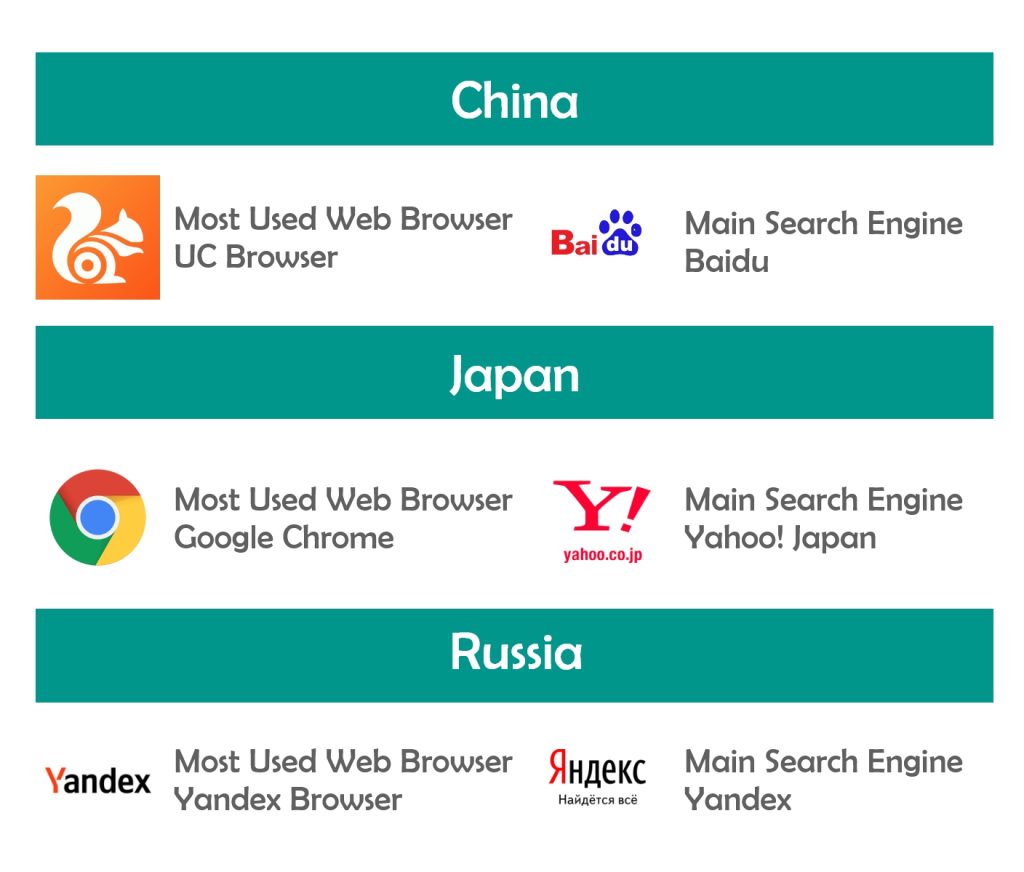
You know, even icons are localized to resonate with different cultures.
Today, a “thumbs up” is an agreement gesture in many countries. However, some nations in the Middle East and Europe see it as an offensive gesture.
What Global Stats Say About
E-Commerce Website Localization
Are you looking for a global entrance for your e-commerce business?
Let the numbers inform your decision-making.
Website Localization Tips for Seamless User Experience
One of the main pillars of successful website localization is ensuring your website provides a seamless user experience. And this would only happen if you customized your website to become accessible, responsive, and easy to navigate for your new target market.
Here are 4 key tips for website localization for a smooth, personalized user experience.
Include Local Pricing
E-commerce websites that support local pricing have higher conversion rates and fewer abandoned carts. That’s a vital point that requires your attention. Ultimately, offering your audience the possibility to buy a product using their local currency enhances the overall customer experience.
In addition to localizing your product prices, you must adapt your pricing strategy to meet the needs of each target market. What is affordable in one country might be expensive in another.
It’s also essential to consider showing any additional costs, like taxes and shipping fees, from the very beginning to prevent surprising your customers at checkout.
Integrate Local Payment Methods
Your customers will look for the easiest and fastest way to checkout after an exciting shopping experience. So, integrating trusted local payment methods in line with your target market makes the purchasing process more convenient.
It is an essential means for increasing your customer conversion rate. If we look around to see how local payment methods differ from one country to another, we can spotlight Alipay in China and GiroPay in Germany. In India, most locals prefer cash on delivery, while in Egypt, you should consider mobile wallets like Vodafone Cash and local bank transfers.
Create a Seamless Shipping And Delivery Operation
Shipping and delivery operations are essential to building your customer experience. For example, when you collaborate with local carriers, you offer your customers faster delivery with lower shipping fees, which highly influences consumer satisfaction.
Also, giving various delivery alternatives, such as express and economy shipping, explicitly shows your efforts to respect your locale’s preferences.
Comply With Country Laws And Regulations
E-commerce laws are different across all countries, and complying with these regulations is essential for businesses looking to enter new markets. They facilitate your entryway by safeguarding your business and preserving customers’ rights.
These laws embody several aspects, such as regulations related to online payments, consumer protection, and data privacy.
Quality Assurance and Website Localization Testing
Have you finished localizing your website? You are not quite ready to launch yet. Before releasing your website to the public, you should put it through some rigorous testing.
In this phase of testing, you make sure that everything from the content to the graphics to the functionality to the user experience is flawless and up to your customers’ standards.
What are these tests, though?
Here you go.
Performance Testing
Locals in some regions might encounter slow connection speeds due to the absence of high-tech infrastructure. Others don’t embrace a technological culture where highly innovative devices are essential.
Accordingly, you must customize a less sophisticated website to reach your target audience in these regions.
Functionality Testing
One way to ensure a seamless user experience is by testing your website’s functionality to ensure that all features work as intended in the localized version. This includes forms, interactive elements, shopping carts, and any other site-specific features.
Linguistic Testing
Verify the accuracy and fluency of the translated content by checking for grammatical errors, cultural appropriateness, and linguistic nuances that may impact the user’s comprehension of your message.
Responsive Design
You must ensure the localized site adapts smoothly to different screens, including mobile phones, tablets, and desktops.
Cross-Browser Compatibility
Test the website on different web browsers commonly used in your target region to ensure consistent functionality and appearance.
TransPalm Web Localization Services: Elevate Your Global Entry
At Transpalm, we streamline your e-commerce business’s entry into new markets by offering comprehensive web localization services. We help you strike a balance between a customized user experience and preserving your brand identity.
TransPalm’s team of experts combines years of expertise in web localization, DTP, and quality assurance with the most innovative technology to deliver an end-to-end solution. We ensure your local customers feel at home while navigating your website, boosting conversion rates and sales.
No matter what you offer or where you plan to offer it, TransPalm has your back by providing web localization services in more than 120 languages. As an ISO-certified web localization provider, our worldwide experts have completed thousands of projects while being committed to applying the ISO standards for management and quality assurance.
Partnering with TransPalm means a productive start for your e-commerce website and a promising growth journey.
Still Hesitant? Let us know more about your project.
Discuss Your Project with Our Experts.

